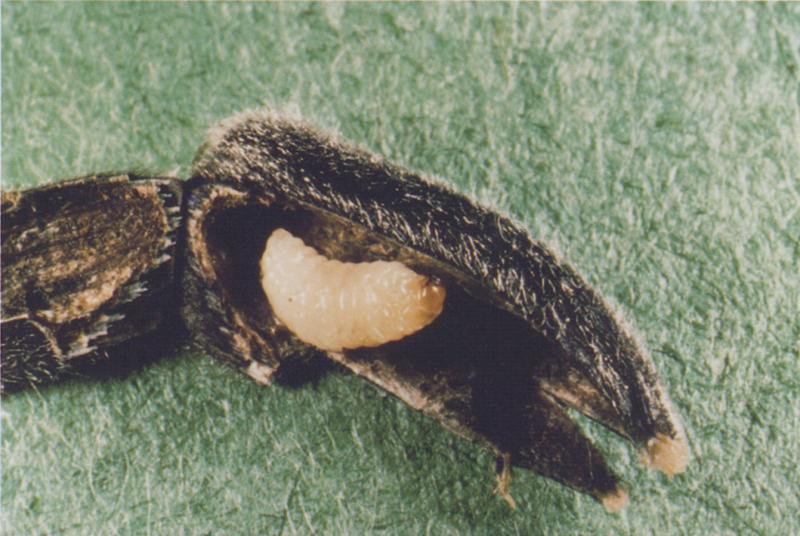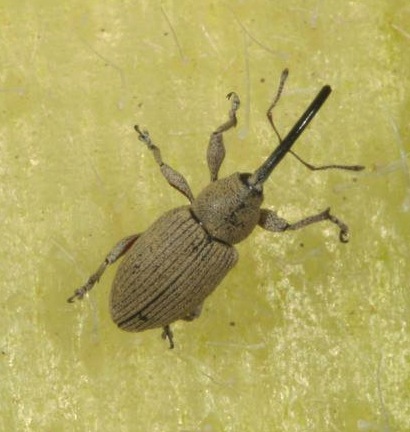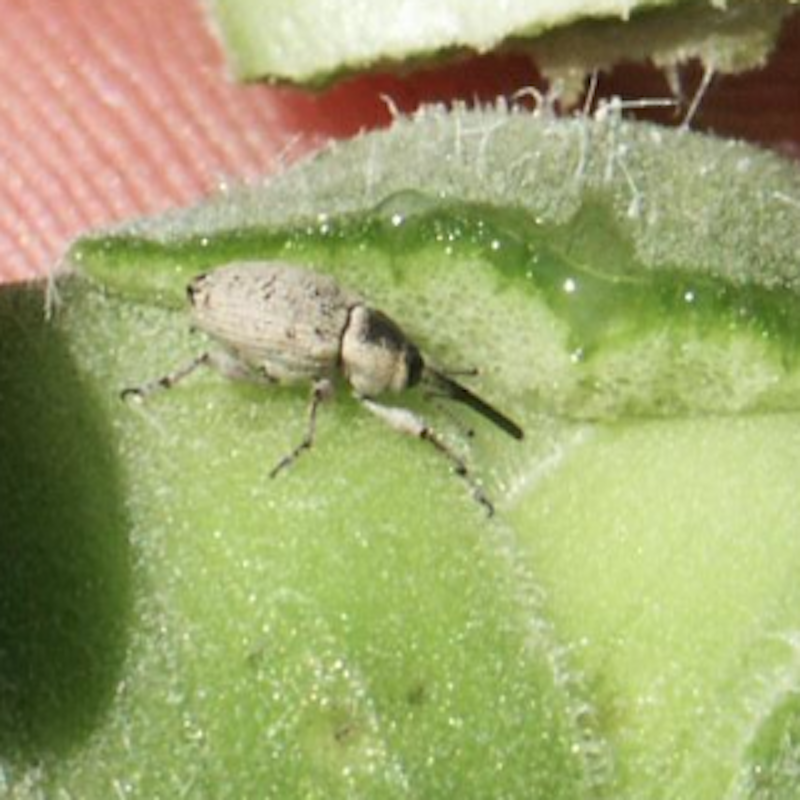
Gray sunflower weevil
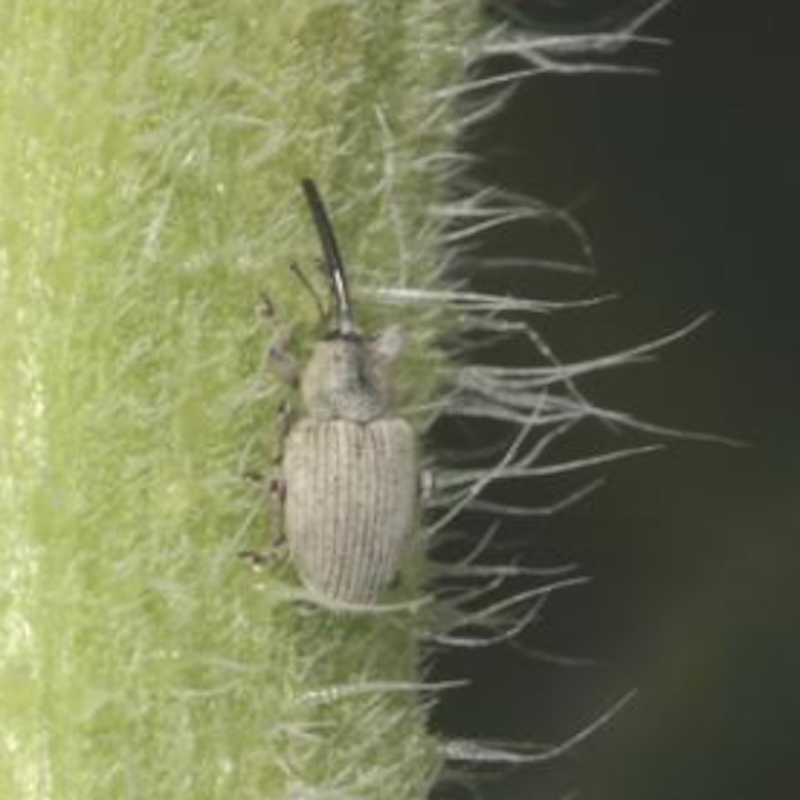
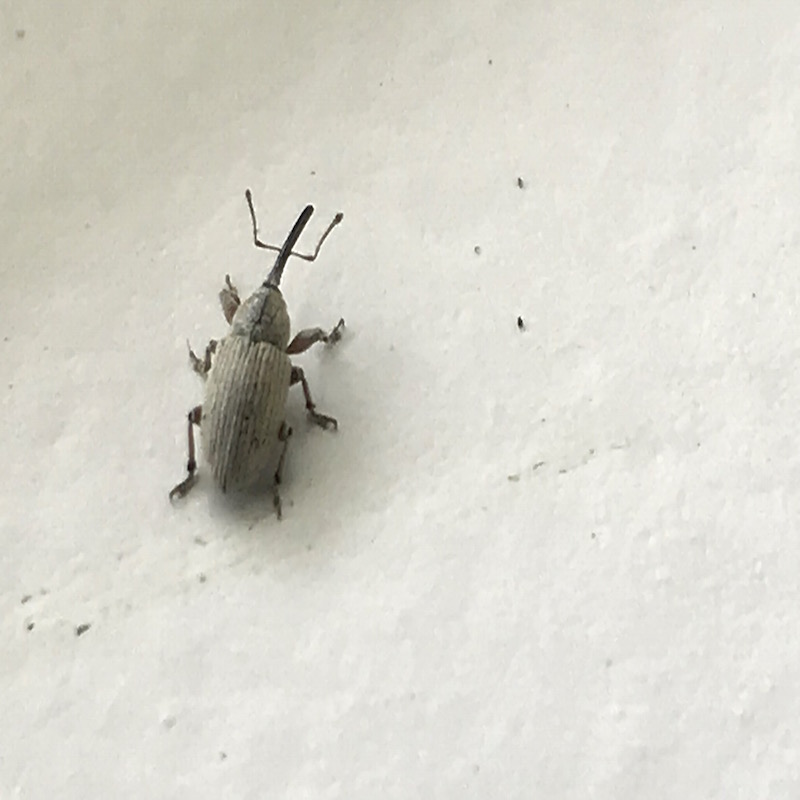
The gray seed weevil, Smicronyx sordidus, has one generation per year and maintains resident populations throughout the state. Their natural host plants are wild sunflower and other annual composite flowers. The gray seed weevil is about 8 mm (1/4 inch) long and pale gray, with a gently curving snout that is about half as long as the body. The cream-colored, legless grubs feed within developing seeds and consume the entire contents, leaving the seed swollen and empty. Larvae normally leave seeds prior to harvest and most affected seed is lost in the process of harvesting due to its low weight.
Adults emerge in late spring and typically enter sunflower fields as plants approach reproductive stages. Adults of both sexes can often be found on the flower buds prior to bloom where they feed on plant tissues underneath the bracts, but cause little damage. Females favor flowers in the late bud stage for oviposition, laying their eggs singly at the base of the developing seeds, focusing on those around the outer edge of the flower disk. Upon hatching, larvae bore into the seeds at their base, destroying the ovaries. At maturity, larvae exit the seeds and drop to the ground where they seek overwintering sites in the soil. Pupation occurs around late May of the following year and adults emerge shortly thereafter.
